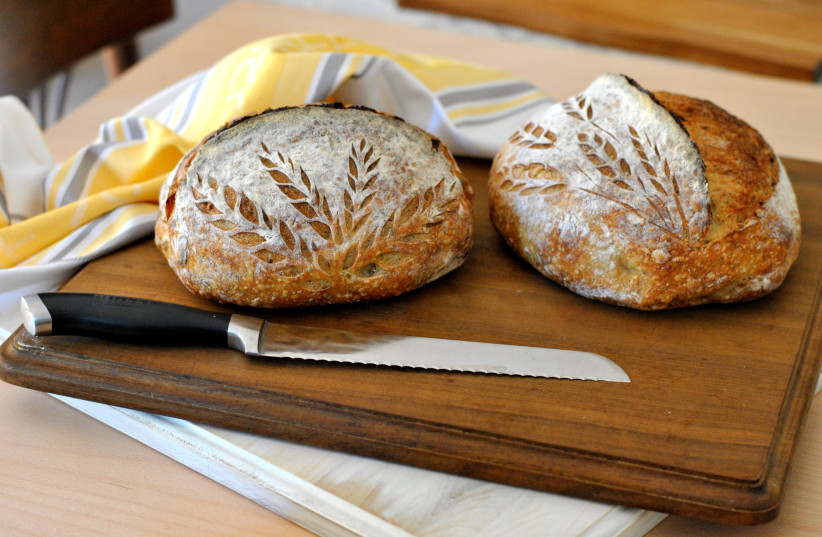Is it just me, or has the whole world gone crazy?
Unless you have been living in a cave, you must be aware of the war raging in Ukraine. As a result, both the Ukraine and Russia, major grain suppliers – accounting for at least 15% of the world’s supply – have basically ground to a halt as Black Sea ports become non-operational. As if that were not enough, almost all the major wheat growers in the world have been hit by severe drought: the US Midwest, France, Iran, Morocco, Australia and India, among others.
Wheat (flour) is not the only raw material at risk. Another, less known product is also being threatened – molasses. Why should molasses concern us as bakers? How many of us use molasses? Not many I’m sure. What most of you do not know is that molasses is essential for production of a vital baking ingredient – yeast. Yeast is grown in huge vats containing a molasses solution. No molasses – no yeast.
I do not have a solution for the wheat crisis, except perhaps baking with alternative grains, but I do have a solution for the upcoming yeast shortage (it is coming) – making your own – sourdough yeast.

Sourdough: The solution to the crisis
Sourdough is basically natural yeast captured from the air. Imagine if you could power a car from air? That would surely solve the world energy crisis. Nature provides us with a way to make bread without having to purchase a cube/packet of yeast from the store – using the air around us.
The air we breathe is rife with billions of microorganisms, bacteria, viruses (like COVID, ick!) – and yeast. Mankind over the millennia has developed a way to “extract” the natural yeasts from the air, together with “friendly” acid producing bacteria, like lactobacilli and acetobacilli. All you have to do is to offer them a meal!
Natural yeasts and the acid-producing bacteria are not fussy eaters; you do not have go gourmet. Simply offer them a bowl of gruel – flour mixed with water (in equal proportions) and they go gaga! You see, the only food these organisms can eat is glucose, which abounds in starch – starch is made up of chains of glucose molecules. The yeasts and bacteria break up the chains into individual glucose molecules and begin to gorge.
Making sourdough: It isn't difficult
Most people think making sourdough is difficult. How difficult can it be if an ancient Egyptian housewife with an IQ matching her sandal size could manage to do it? (The ancient Egyptians discovered it.)
Simply take a bowl. Add 250 gr. of flour (any flour) and 250 ml. of water and mix well. Cover the bowl with a dishcloth and leave it on your kitchen counter for two to five days (in this summer heat, it may take less). For the yeast and bacteria in the air, the dishcloth is not a barrier, they bypass it with ease. As soon as they come into contact with the mixture, the yeast and bacteria begin the chemical reaction of fermentation, which releases carbon dioxide (CO²) gas. You will see this as bubbles in the mixture. When bubbles begin to form, it means that the yeasts and bacteria from the air have entered the mixture and are starting to reproduce. Warmth, moisture and food are the perfect growth environment. As they reproduce, more fermentation takes place – more bubbles.
When you see lots of bubbles beginning to form, it means they are “eating away” at the flour in the mixture and their food source slowly begins to deplete. You now need to begin “feeding” them at regular intervals by adding 250 gr. of flour and 250 ml. of water at 12hr intervals, mixing thoroughly and covering. After a few of these “feeds,” the mixture will begin to bubble vociferously and this means there are sufficient organisms in the mixture to make bread with. This mixture is now called a sourdough “culture” or “starter.” It should smell “yeasty” and a little sour. If it smells disgusting, like something died in it, it means you have captured undesirable bacteria. Discard, sterilize the bowl and start over.
If the mixture has not begun to bubble wildly and you have reached the top of the bowl, pour two thirds of the mixture down the sink and continue feeding the remaining third as above, until it does.
You may now use this “active” starter to bake bread (see recipe below) or store it. To store, feed it with more flour and water as above, pour into a plastic “Tupperware” container with a lid, and leave in the fridge. To use the starter from the fridge, take it out and feed it as above, let it reach room temperature and bubble up. It is now active again for baking.
You may leave the starter in the refrigerator indefinitely. Just be sure to feed it once a week (if overflowing, discard some) and return to the fridge.
The flavor of sourdough bread is streets better than with regular yeast, it just takes longer to rise. Aside from delicious bread, this is a great “science/chemistry” experiment to do with the kids in the summer vacation.
No yeast? No problem. Use nature’s yeast. ❖
The writer, a master baker originally from Johannesburg, South Africa, lives in Karnei Shomron with his wife Sheryl and four children. He is CEO of the Saidel Jewish Baking Center (www.jewishbakingcenter.com), which specializes in baking and teaching how to bake healthy, traditional Jewish bread. He also manages the Showbread Institute (www.showbreadinstitute.org) which researches the biblical showbread.
<br>Sourdough Bread Recipe
Makes 2 loaves.
- 1 cup active starter
- 3½ cups flour
- 1½ cups water
- 3 tsp. salt
Mix and knead for 10 minutes by hand (6 minutes in the mixer). Divide dough in two. Place in bread tins and leave to rise for 3-4 hours in a warm spot. Bake at 250ºC for 40 minutes.
